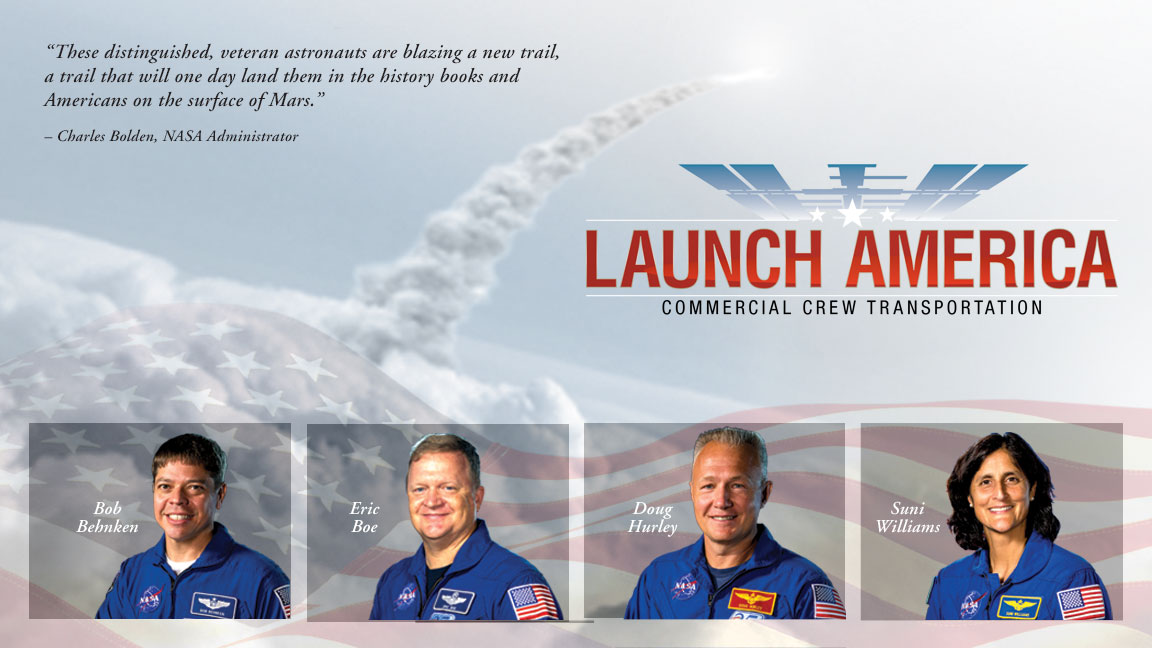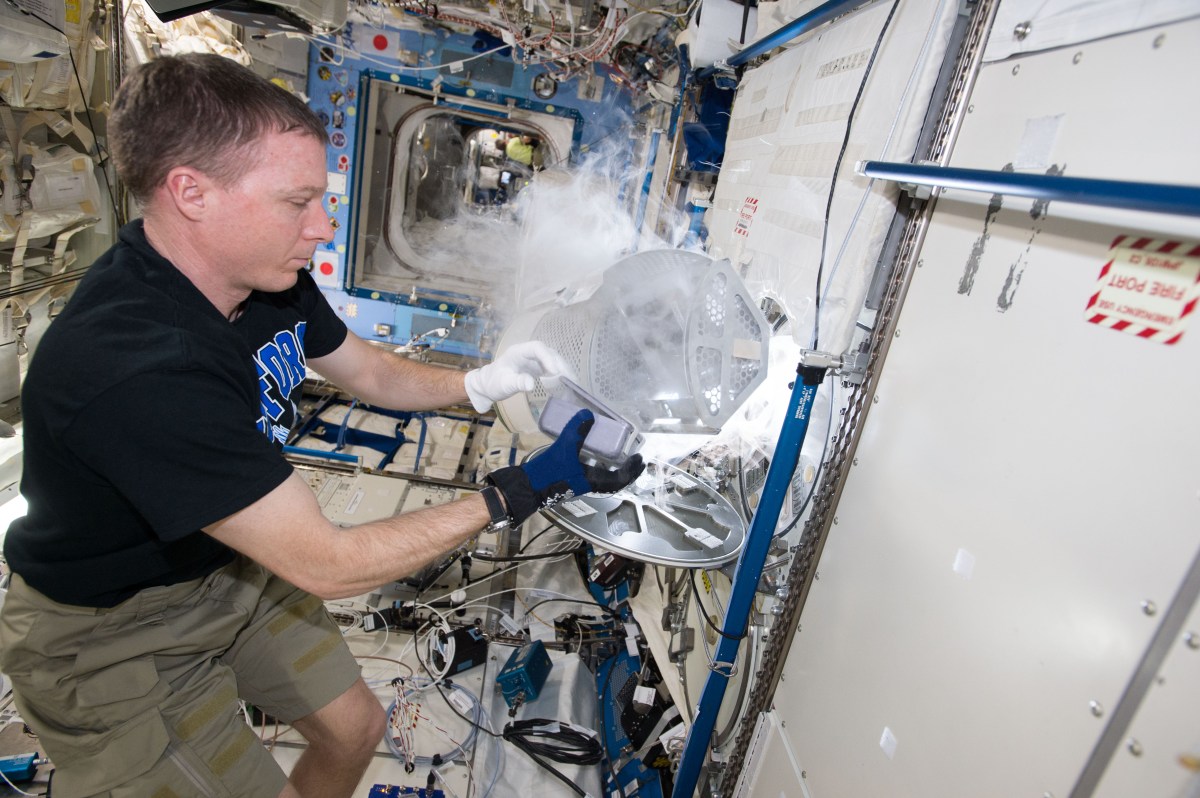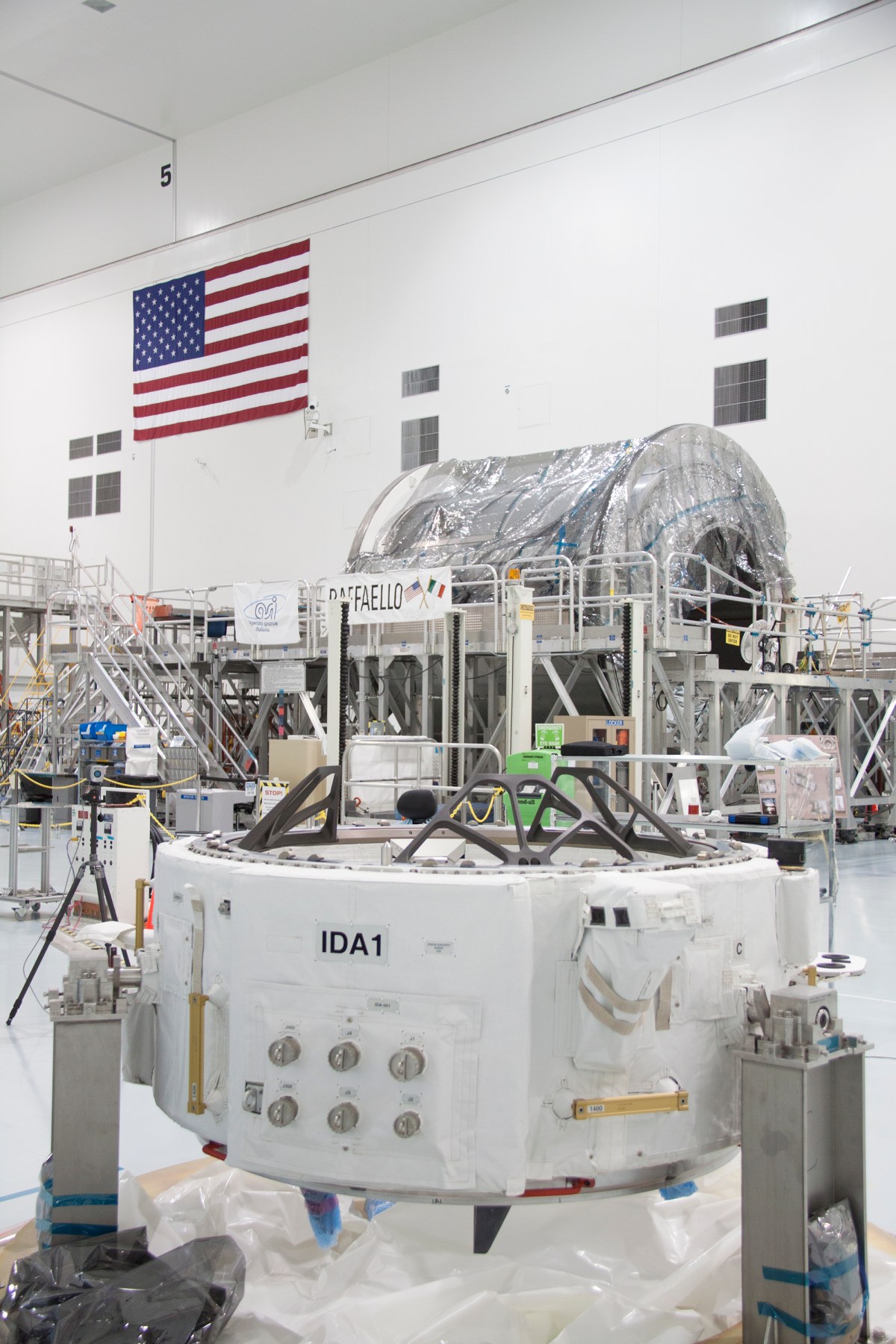Our astronauts had the chance to share the path forward for Commercial Crew and why they are excited to train and ultimately fly to the International Space Station aboard Boeing’s
CST-100 and SpaceX’s Crew Dragon. 
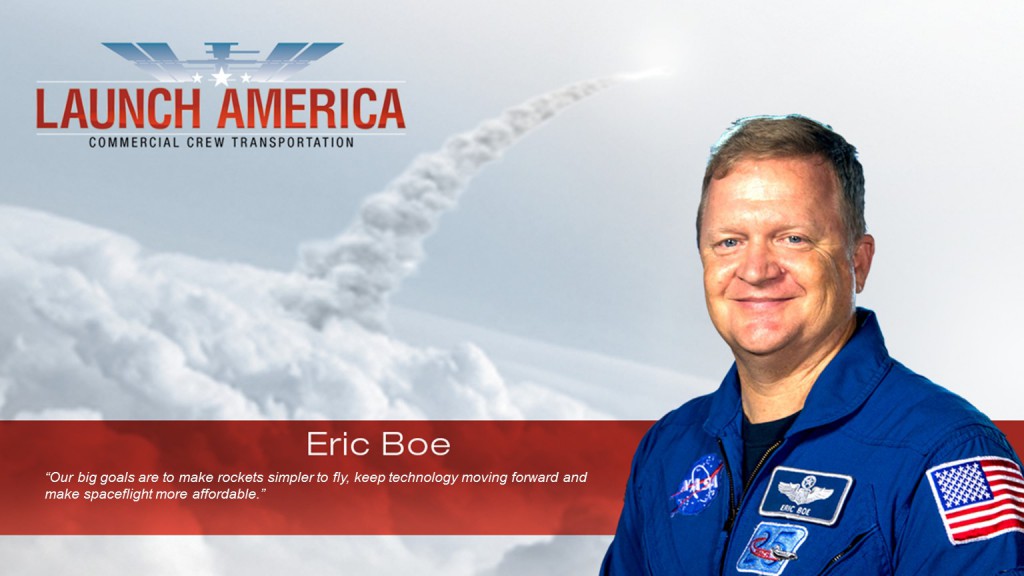


Four Commercial Crew Astronauts Live on NASA TV Today
 The four NASA astronauts selected to train for Commercial Crew flight tests will share the stage today for interviews with national news outlets. NASA TV will carry the interviews live from the agency’s Johnson Space Center in Houston beginning at 3:30 p.m. EDT. The experienced space travelers – Bob Behnken, Eric Boe, Doug Hurley and Suni Williams – will discuss their newest assignments, the value Commercial Crew brings to continuing critical science on board the International Space Station and our new era of human space exploration.
The four NASA astronauts selected to train for Commercial Crew flight tests will share the stage today for interviews with national news outlets. NASA TV will carry the interviews live from the agency’s Johnson Space Center in Houston beginning at 3:30 p.m. EDT. The experienced space travelers – Bob Behnken, Eric Boe, Doug Hurley and Suni Williams – will discuss their newest assignments, the value Commercial Crew brings to continuing critical science on board the International Space Station and our new era of human space exploration.
In the meantime, you can catch up on the agency’s big news from yesterday with our feature about the announcement, videos of the four astronauts and photos of them in space during previous missions, all found on this blog feed.
Four Astronauts Selected for Commercial Crew Flights
 “I am pleased to announce four American space pioneers have been selected to be the first astronauts to train for test flights to space on commercial crew vehicles, all part of our ambitious plan to return space launches to U.S. soil, create good-paying American jobs and advance our goal of sending humans farther into the solar system than ever before,” said NASA Administrator Charles Bolden. “These distinguished, veteran astronauts are blazing a new trail — a trail that will one day land them in the history books and Americans on the surface of Mars.”
“I am pleased to announce four American space pioneers have been selected to be the first astronauts to train for test flights to space on commercial crew vehicles, all part of our ambitious plan to return space launches to U.S. soil, create good-paying American jobs and advance our goal of sending humans farther into the solar system than ever before,” said NASA Administrator Charles Bolden. “These distinguished, veteran astronauts are blazing a new trail — a trail that will one day land them in the history books and Americans on the surface of Mars.”
Bob Behnken, Eric Boe, Doug Hurley and Suni Williams will train to fly on flight tests aboard Boeing’s CST-100 and SpaceX’s Crew Dragon spacecraft to certify them for operational use. Both spacecraft are in development with NASA’s Commercial Crew Program.
NASA Selects Astronauts for First U.S. Commercial Spaceflights
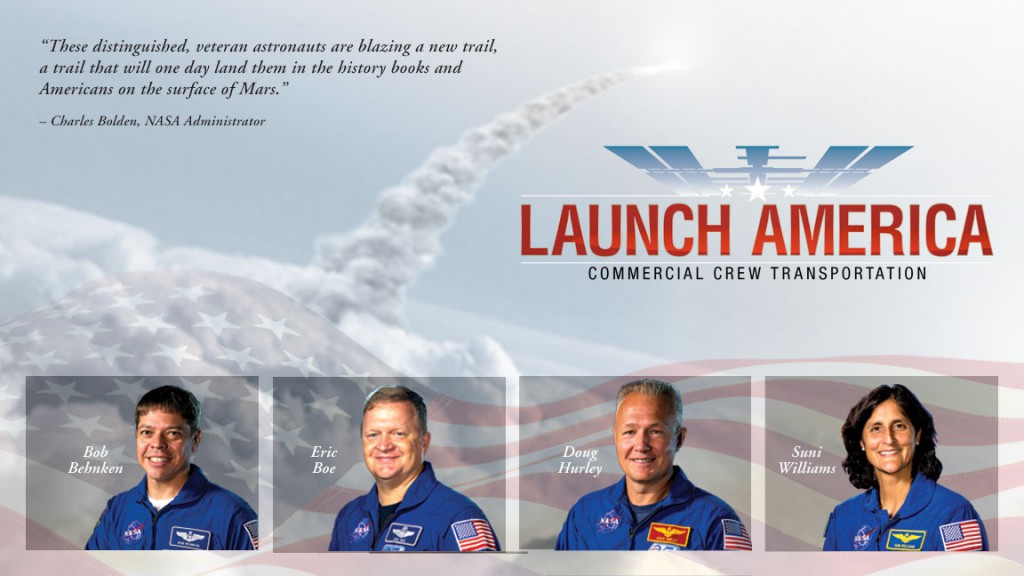 Four astronauts will train to fly Commercial Crew flight tests in 2017 aboard the Boeing CST-100 and SpaceX Crew Dragon. Bob Behnken, Eric Boe, Doug Hurley and Suni Williams have been selected to be the first astronauts to board those spacecraft.
Four astronauts will train to fly Commercial Crew flight tests in 2017 aboard the Boeing CST-100 and SpaceX Crew Dragon. Bob Behnken, Eric Boe, Doug Hurley and Suni Williams have been selected to be the first astronauts to board those spacecraft.
Get to know our new crew:
Bob Behnken on the value the team brings to Commercial Crew:
Eric Boe on why he is excited for Commercial Crew:
Doug Hurley on the Commercial Crew and Providers efforts:
Suni Williams on what the announcement means:
Research Conference Highlights Station Science
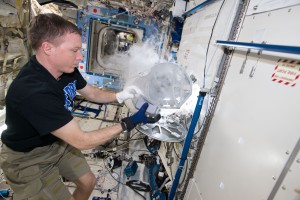 The chance to add an additional crew member to the International Space Station once Commercial Crew spacecraft become operational will greatly increase the science potential for the orbiting laboratory. The station’s standard complement is six residents and that allows for about 40 hours a week of research work with the rest of the time dedicated to station operations and other duties. Adding just one more person to the station crew will enable about 40 more hours a week for scientific work.
The chance to add an additional crew member to the International Space Station once Commercial Crew spacecraft become operational will greatly increase the science potential for the orbiting laboratory. The station’s standard complement is six residents and that allows for about 40 hours a week of research work with the rest of the time dedicated to station operations and other duties. Adding just one more person to the station crew will enable about 40 more hours a week for scientific work.
The additional time will boost opportunities requiring human interaction, such as biological research key to understanding survival on a mission into deep space, growth experiments and space-based observations. Added together, a doubling of scientific time would better utilize the unique platform humans assembled 250 miles above Earth and have occupied for almost 15 years.
A key step to this research progress is the completion and operation of the Boeing CST-100 and SpaceX Crew Dragon systems now in the final phases of development with Commercial Crew. Both companies and NASA are making steady advances toward uncrewed flight tests before undertaking crew flight tests to the station. Together, the space agency and industry are paving the way to certification and operational missions, carrying four astronauts and a couple hundred pounds of powered cargo to the station at a time.
Learn more about the advancements currently being made on board the station and what the future holds by following along with the ISS R&D Conference in Boston this week via social media with #ISSRDC.
Celebrate the Fourth of July with Commercial Crew
Celebrate Fourth of July with Commercial Crew by coloring our newest coloring sheet. You can download the sheet, at http://go.nasa.gov/1Hy6H2U.
 Also, don’t forget to check out the NASA exhibits at Essence Fest and the Audubon Institute’s Aquarium if you are in New Orleans this weekend.
Also, don’t forget to check out the NASA exhibits at Essence Fest and the Audubon Institute’s Aquarium if you are in New Orleans this weekend.
SpaceX, NASA Working Toward Higher Fidelity In-Flight Abort Test
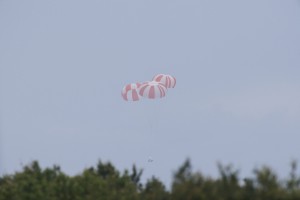 Following the successful pad abort test on May 6, SpaceX began developing a plan that would move its in-flight abort test to provide higher fidelity data and reduce risk to future crews launched to the International Space Station in the Crew Dragon spacecraft. In the updated plan, SpaceX would launch its uncrewed flight test, called DM-1, refurbish the flight test vehicle, then conduct the in-flight abort test prior to the crew flight test. Using the same vehicle for the in-flight abort test will improve the realism of the ascent abort test and reduce risk. Further, the test would be performed from Kennedy Space Center’s historic Launch Complex 39A instead of from Vandenberg Air Force Base. To read more information about the plan, visit http://go.nasa.gov/1LVgAHH.
Following the successful pad abort test on May 6, SpaceX began developing a plan that would move its in-flight abort test to provide higher fidelity data and reduce risk to future crews launched to the International Space Station in the Crew Dragon spacecraft. In the updated plan, SpaceX would launch its uncrewed flight test, called DM-1, refurbish the flight test vehicle, then conduct the in-flight abort test prior to the crew flight test. Using the same vehicle for the in-flight abort test will improve the realism of the ascent abort test and reduce risk. Further, the test would be performed from Kennedy Space Center’s historic Launch Complex 39A instead of from Vandenberg Air Force Base. To read more information about the plan, visit http://go.nasa.gov/1LVgAHH.
NASA in New Orleans
A Closer Look at Our Docking Port
The cargo Dragon spacecraft set to launch this morning is carrying a 1,000-pound International Docking Adapter that will make it easier for Commercial Crew spacecraft to connect to the station. IDA-1, as the component is called, will be connected to the port on the end of the Harmony module on the space station. Equipped with modernized docking targets and sensors, the IDA, made by Boeing, will give the Boeing CST-100 and SpaceX Crew Dragon a place to dock. Many of the sensors and targets are set up so the spacecraft can steer safely to the station and dock automatically to the IDA. A second IDA will be sent into space later will be connected to another port on the station to provide a backup parking place for spacecraft. There’s a lot more to the IDA’s story, including the cooperation it has taken to make, test and launch. For those details, go to http://go.nasa.gov/1Ik5HjQ.  .
.
Docking Adapter to Set Stage for Commercial Crew Craft
 SpaceX and Boeing will work together to see a component valuable to the Commercial Crew effort of both companies delivered to the International Space Station this weekend. Boeing built the 42-inch-tall International Docking Adapter that is nestled inside the trunk of SpaceX’s Dragon spacecraft as it awaits launch to the station.
SpaceX and Boeing will work together to see a component valuable to the Commercial Crew effort of both companies delivered to the International Space Station this weekend. Boeing built the 42-inch-tall International Docking Adapter that is nestled inside the trunk of SpaceX’s Dragon spacecraft as it awaits launch to the station.
The IDA, as the adapter is called, will be the first of two installed on the station that will give Boeing’s CST-100 and SpaceX’s Crew Dragon a place to park when they bring astronauts to the orbiting laboratory in the near future. Both of the next generation of crewed spacecraft are being built to the universal standards of the IDA which also features advanced sensors and targets that allow spacecraft visiting the station to safely dock autonomously. Read more about the IDAs and what went into building and processing them for launch at http://go.nasa.gov/1Ik5HjQ

